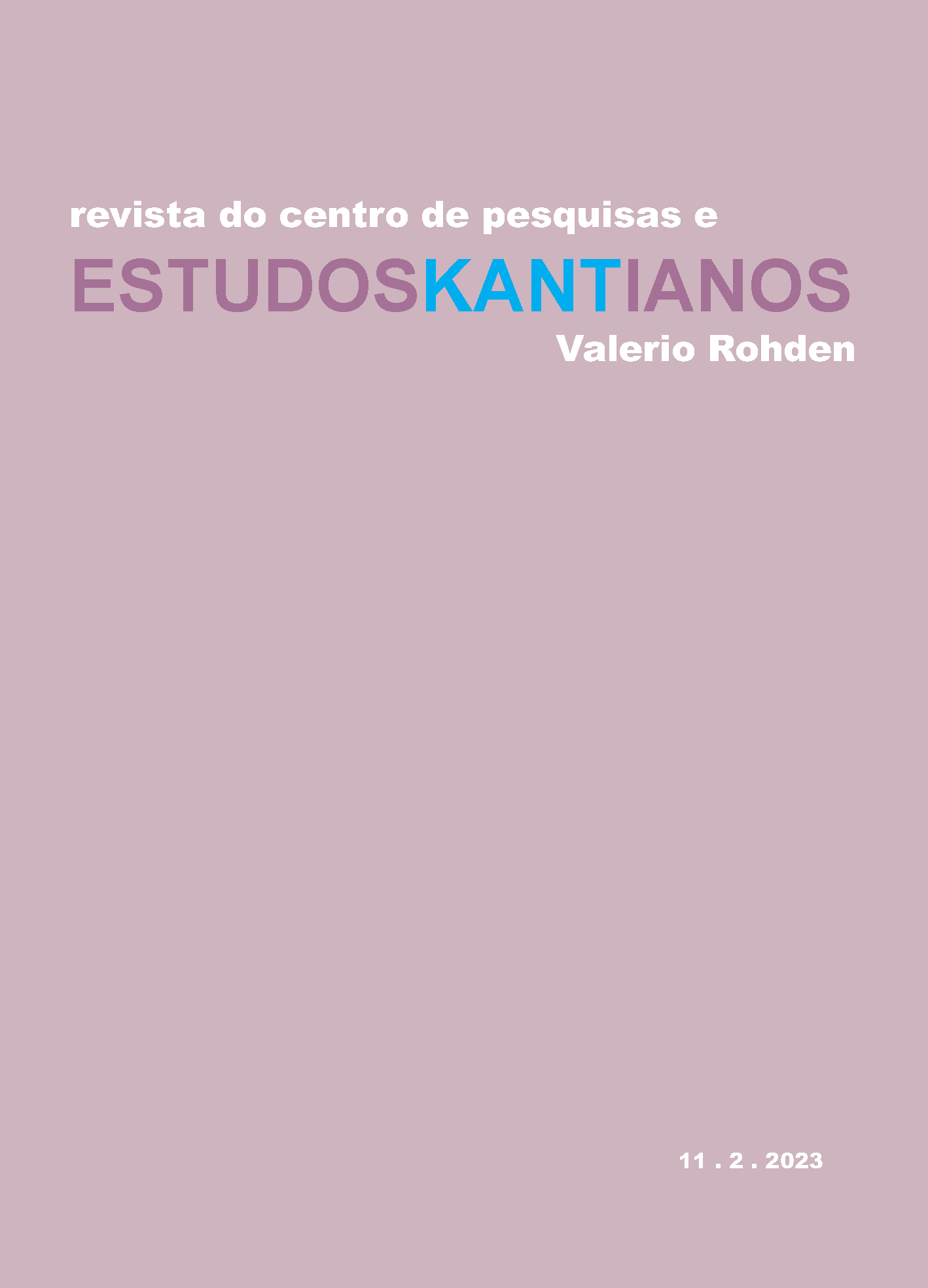To Feel - The I. Notes on Aesthetic Dimension and Bodiliness in Kaulbach and Kant
DOI:
https://doi.org/10.36311/2318-0501.2023.v11n2.p137Keywords:
Kant, Kaulbach, aesthetics, subjectivity, reflectionAbstract
Moving from Kaulbach interpretation of the third Critique, the paper proposes some considerations on the relationship between the aesthetical dimension and subjectivity in Kant. My aim, in so doing, is twofold. On the one hand, indeed, I want to reevaluate Kaulbach confrontation with Kant within the Kantian Studies. On the other, I aim to prove that every cognitive interpretation of the critique (such as Kaulbach’s) fails to understand Kant’s concept of transcendental subject. To do this, the paper articulates in three steps. A first, on Kaulbach’s book Ästhetische Welterkenntnis bei Kant. A second, looking for a definition of subjectivity by Kaulbach in an article of 1963. A third, finally, on the evolution of Kant’s thought between the Dissertatio of 1770 and the second edition of the first Critique.
Downloads
Downloads
Published
Issue
Section
License
Copyright (c) 2023 Kantian Studies (EK)

This work is licensed under a Creative Commons Attribution 4.0 International License.
![Estudos Kantianos [EK]](https://revistas.marilia.unesp.br/public/journals/16/pageHeaderLogoImage_pt_BR.png)



